5 Pyramids of the Ancient World that You May Not Have Heard About
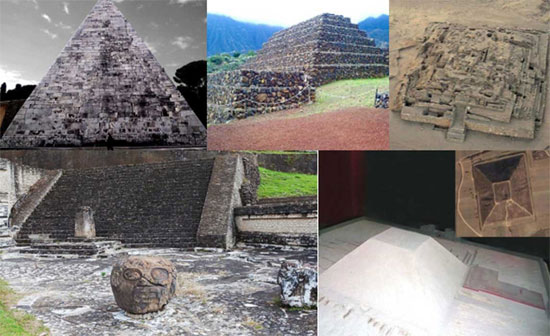
The Great Pyramid of Giza is undoubtedly one of the most well-known icons of the ancient world. But thousands of other pyramids exist, not just in Egypt, but across the entire globe, including Europe, Asia, Oceania and the Americas. The reason why so many ancient civilizations, many of which had no contact with each other, were constructing pyramids at around the same time remains a bit of a mystery.
Nevertheless, many of these impressive monuments remain as legacies of these rich, ancient cultures. Here, we look at 5 little-known pyramids from the ancient world.
1. A Pyramid in the Heart of Rome
Italy, Rome is well known for its ancient architecture – the Colosseum, Pantheon, Trajan’s Market and the Roman Forum to name a few – but one thing it is not often associated with is pyramids. But right in the heart of Rome, sits a 2,000-year-old pyramid, measuring 30 meters along each side and 35 meters in height. You can’t miss it! Yet very few people have heard of Rome’s Pyramid of Cestius.
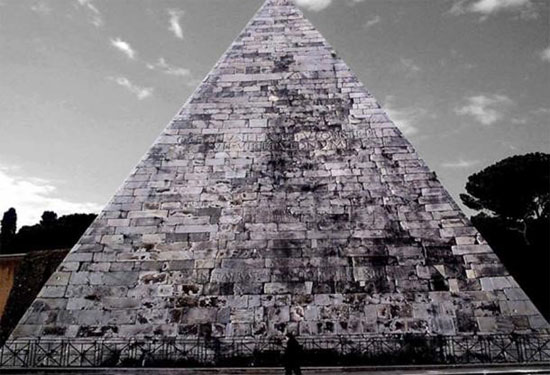
The Pyramid of Cestius (CC by SA 2.0)
The Pyramid of Cestius was built along the Via Ostiensis, an important road in ancient Rome, sometime between 18 and 12 BC. While it is debatable whether the Egyptian pyramids were ever really used as tombs, the pyramid of Cestius most definitely was. Within the pyramid is a barrel-vaulted burial chamber which, according to the inscriptions on the east and west flanks of the pyramid, housed the body of a Roman politician known as Gaius Cestius Epulo, a tribune, praetor and member of the priesthood. A second inscription announces that the building of this pyramid was completed in 330 days.
2. The Mysterious Pyramids of Tenerife, Canary Islands
Tenerife in the Canary Islands is well-known as a holiday destination, but many tourists visit the island unaware that there are pyramids there and an ongoing mystery. Who built the pyramids, when were they constructed, and why? The pyramids can be found at Güímar, a town in the south of Tenerife. Built from lava stone without the use of mortar, the pyramids have caused much controversy among academics. One study dated the pyramids to the 19th century AD, based on pottery found near the site, and said they are little more than piles of volcanic rocks that farmers had made when clearing the land. However, this has been hotly disputed. Norwegian explorer Thor Heyerdahl argues that the pyramids were built by the Guanches, the aboriginal Berber inhabitants of the Canary Islands who migrated to the archipelago around 1,000 BC. Hayerdahl points out that the constructions are painstakingly designed with stepped levels and possible alignments made for ceremonial purposes, such as those that could have been carried out at the Summer Solstice.
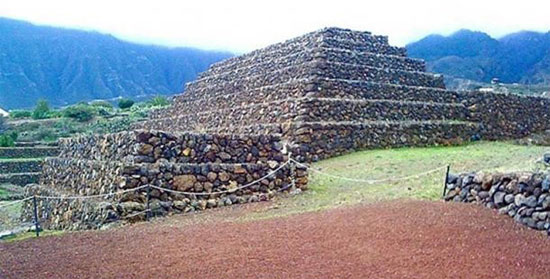
One of the Pyramids of Güímar
In 1991, Juan Antonio Belmonte Avilés, Antonio Aparicio Juan, and César Esteban López, who were researchers from the Canary Institute of Astrophysics, demonstrated that the long sides of some of the terraces surrounding the pyramids of Güímar marked the direction of winter and summer solstices. Heyerdahl hypothesized that the Canarian pyramids formed a temporal and geographic stopping point on voyages between ancient Egypt and the Maya civilization, initiating a controversy in which historians, archaeologists, astronomers, and those with a general interest in history have all taken part.
3. The Great Pyramid of Cholula, Mexico
Despite being recognized by the Guinness Book of Records as the largest pyramid in the world in terms of its volume, not many people have heard of the Great Pyramid of Cholula. Located just outside the city of Puebla, the pyramid was dedicated to Quetzalcoatl, one of the most important deities of the Mesoamerican pantheon, and during pre-Colombian times, Cholula was a large city and the religious center of highland Mexico. The construction of the temple began during the 2nd century BC, and went through several stages before achieving its final form. Around 1100 AD, the city fell into the hands of the Toltec-Chichimecas and the pyramid was abandoned as new temples were created.
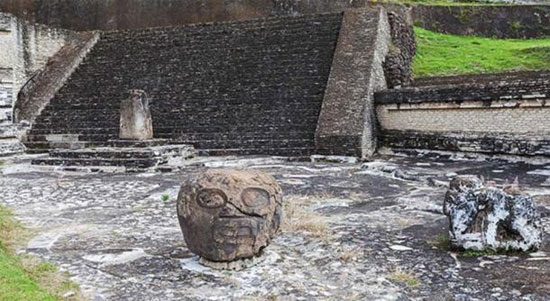
A section of the ruins of the Great Pyramid of Cholula, Puebla, Mexico
Over the centuries, it became covered in earth and vegetation and it was not until 1910, when authorities began the construction of a mental asylum, that the ‘natural hill’ was found to be the home of an ancient pyramid.
4. The Legendary 1,000Ft White Pyramid of Xian, China
Scattered across an isolated, flat plain in Shaanxi Province, near the ancient capital of Xi’an, lie dozens of spectacular pyramid mounds that are little known outside China. Mixed in with the reality of these impressive tombs, is a legend of an enormous 1,000-foot white, jewel-capped pyramid that would outshine even the Great Pyramid of Giza. While some researchers believe that aerial sightings of the ‘White Pyramid of Xi’an’ correspond with the Maoling Mausoleum, tomb of Emperor Wu of Han, others maintain that the legendary pyramid is yet to be found. Reported sightings of an enormous white pyramid in China date back more than a century to the diary entries of American travel agent and trader Fred Meyer Schroder, who spotted a giant pyramid in the distance while walking with a Buddhist monk guide in Shaanxi Province in 1912.
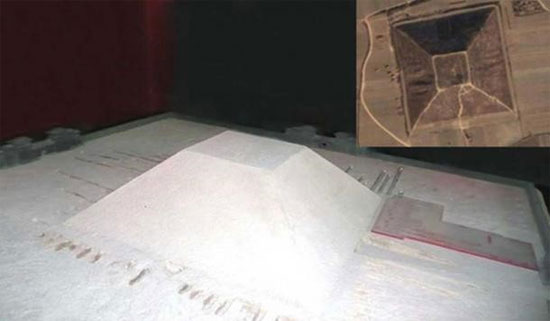
Schroder estimated that it was at least 300 meters high (roughly 1,000 feet) with 500-meter sides. Such dimensions would give the structure a volume ten times greater than that of the Great Pyramid in Egypt. Schroder’s Mongolian guide, Bogdo, informed him that the pyramids are at least 3,000 years old and that information about them is recorded in ancient monastic documents and is well-known in local legend.
Two more sightings by pilots occurred in the 1940s, both corroborating earlier reports of its size and features. Some believe that the White Pyramid may lie within the rugged terrain of the Qin Ling Mountains, difficult to spot among the towering mountains and deep gorges. Numerous researchers and explorers have pursued the White Pyramid of Xi’an, but none to date have been successful.
5. The 5,000-Year-Old Pyramid City of Caral, Peru
The Norte Chico civilization of Supe, Peru was the first known civilization of the Americas. Their capital was the Sacred City of Caral – a 5,000-year-old metropolis complete with complex agricultural practices, rich culture, and monumental architecture, including stone and earthen platform mounds, temples, amphitheatre, sunken circular plazas, residential areas and six large step pyramids. The ancient city was first discovered in 1905 by the German archaeologist Max Uhle, but it wasn’t until the 1970s that archaeologists realized that the hills originally identified as natural formations were actually step pyramids.
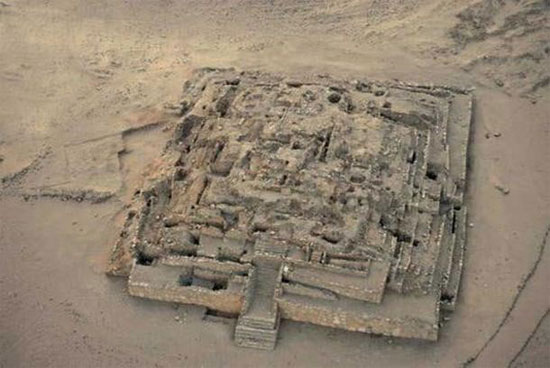
Remains of the Great Pyramid of Caral
By the 1990s, the full extent of the great city of Caral and its six pyramids had emerged after having lain buried beneath the sand for five millennia.
While we already know of the existence of thousands of pyramids around the world, it is hypothesized that there are hundreds more that are yet to be discovered. From the dense jungles of South America and Asia, to enormous mounds covered in vegetation or snow that could easily be mistaken for natural hills, the planet has not yet revealed all of the pyramids from its ancient past.
yogaesoteric
May 8, 2019
